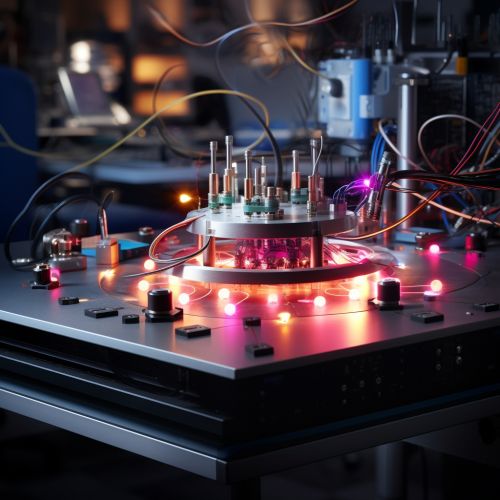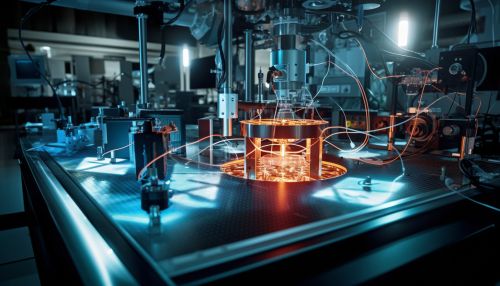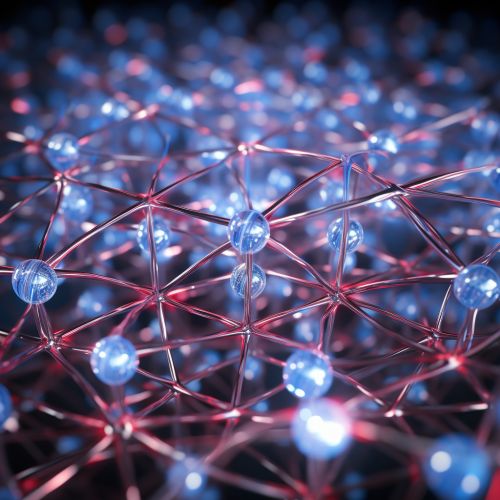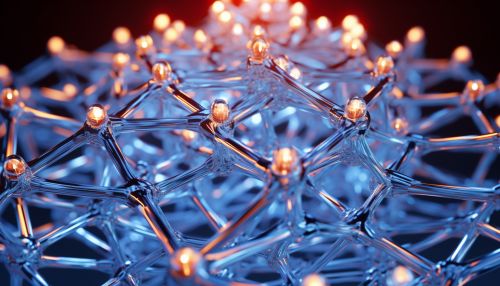Quantum Hall Effect and Topological Insulators
Introduction
The Quantum Hall Effect and Topological Insulators are two significant concepts in the field of condensed matter physics. Both phenomena are characterized by their unique electronic properties, which are deeply rooted in the principles of quantum mechanics and topology. This article aims to provide a comprehensive understanding of these two concepts, their theoretical foundations, experimental observations, and potential applications.


Quantum Hall Effect
The Quantum Hall Effect (QHE) is a quantum-mechanical version of the classical Hall effect. The classical Hall effect was first observed by Edwin Hall in 1879, and it describes the generation of a voltage difference (the Hall voltage) across an electrical conductor, transverse to an electric current in the conductor and a magnetic field perpendicular to the current.
The Quantum Hall Effect, however, was first observed during experiments conducted in the early 1980s by Klaus von Klitzing, for which he was awarded the Nobel Prize in Physics in 1985. The Quantum Hall Effect is observed in two-dimensional electron systems in the presence of low temperatures and strong magnetic fields, where the Hall conductance undergoes quantum transitions between plateaus as the magnetic field is varied.
Theoretical Background
The Quantum Hall Effect is a result of the principles of quantum mechanics, particularly the concept of Landau Levels. Landau Levels are quantized energy levels for charged particles moving in a magnetic field. In a two-dimensional electron gas, these Landau Levels lead to the quantization of the Hall conductance.
The integer Quantum Hall Effect (IQHE) is observed when the Fermi level is in the gap between two Landau Levels. The Hall conductance in this case is an integer multiple of a fundamental constant, known as the von Klitzing constant, denoted by Rk.
The fractional Quantum Hall Effect (FQHE), on the other hand, is observed when the Fermi level is within a Landau Level. The Hall conductance in this case is a rational fraction of the von Klitzing constant. The FQHE is a manifestation of the correlated behavior of electrons and it provides the first evidence for the existence of anyons, particles that are neither fermions nor bosons.
Topological Insulators
Topological Insulators (TIs) are a phase of matter characterized by their unique electronic properties. They are insulating in their interior but have conducting states on their boundaries or surfaces. These surface states are a result of the non-trivial topology of the bulk band structure.


Theoretical Background
The theory of Topological Insulators is rooted in the principles of topology, a branch of mathematics that studies the properties of space that are preserved under continuous transformations. In the context of condensed matter physics, topology helps to classify different phases of matter based on their topological invariants.
Topological Insulators are characterized by a topological invariant known as the Z2 invariant. This invariant can take two values, 0 or 1, corresponding to a trivial insulator and a topological insulator, respectively.
The surface states of Topological Insulators are protected by time-reversal symmetry, making them robust against perturbations that do not break this symmetry. These states have a linear energy-momentum relation, leading to massless Dirac fermions. Furthermore, these states exhibit spin-momentum locking, where the direction of motion of the electrons determines their spin orientation.
Applications and Future Directions
The Quantum Hall Effect and Topological Insulators have potential applications in various areas of technology. The Quantum Hall Effect has already been used to define the standard for electrical resistance. With the advent of the Quantum Hall resistance standard, electrical resistance can now be measured with an unprecedented level of precision.
Topological Insulators, on the other hand, are being explored for applications in spintronics and quantum computing. The robust surface states of Topological Insulators could be used to create devices that are less susceptible to defects and impurities.
Furthermore, the study of the Quantum Hall Effect and Topological Insulators has paved the way for the exploration of other topological phases of matter, such as topological superconductors and topological semimetals.
